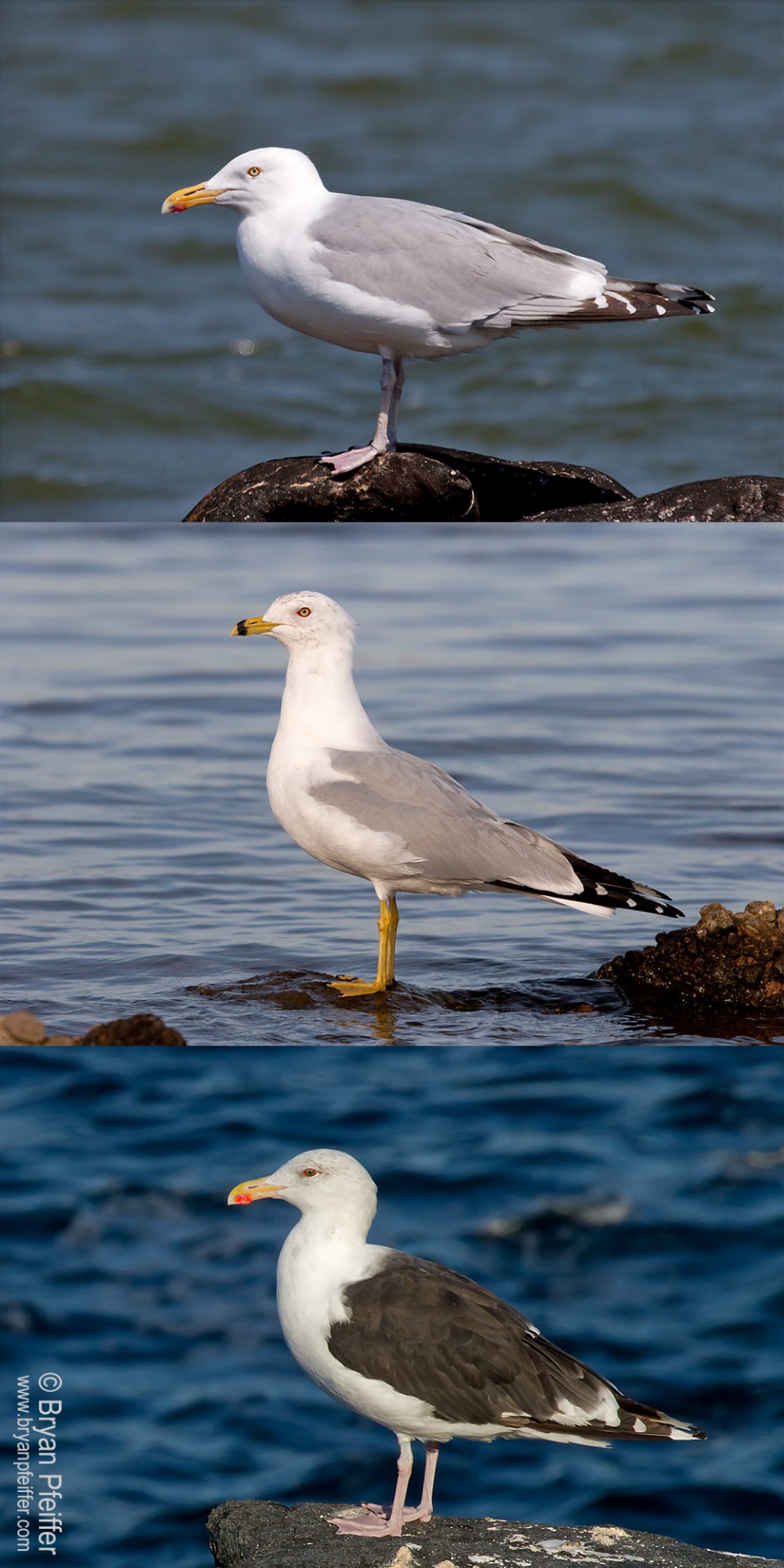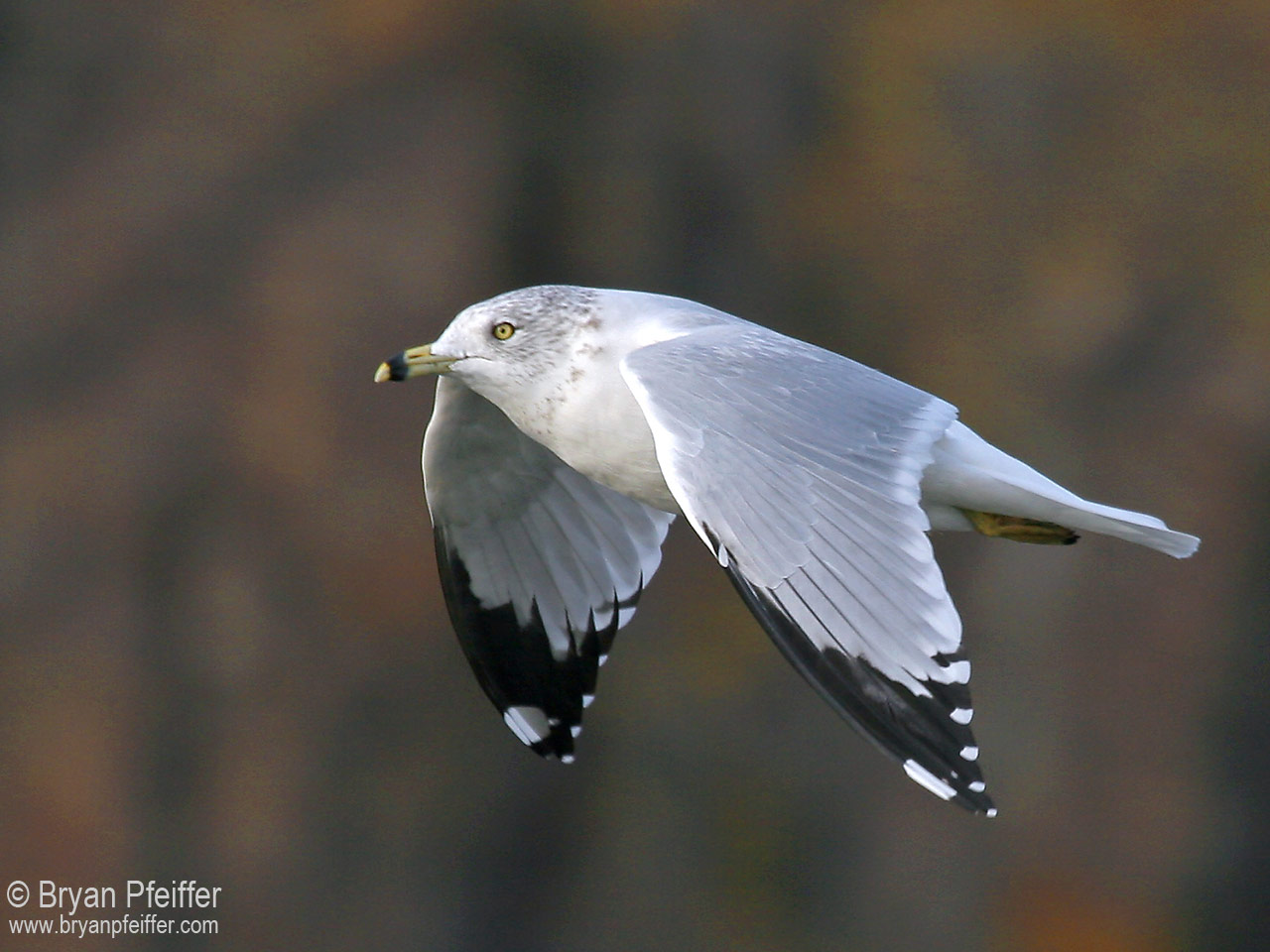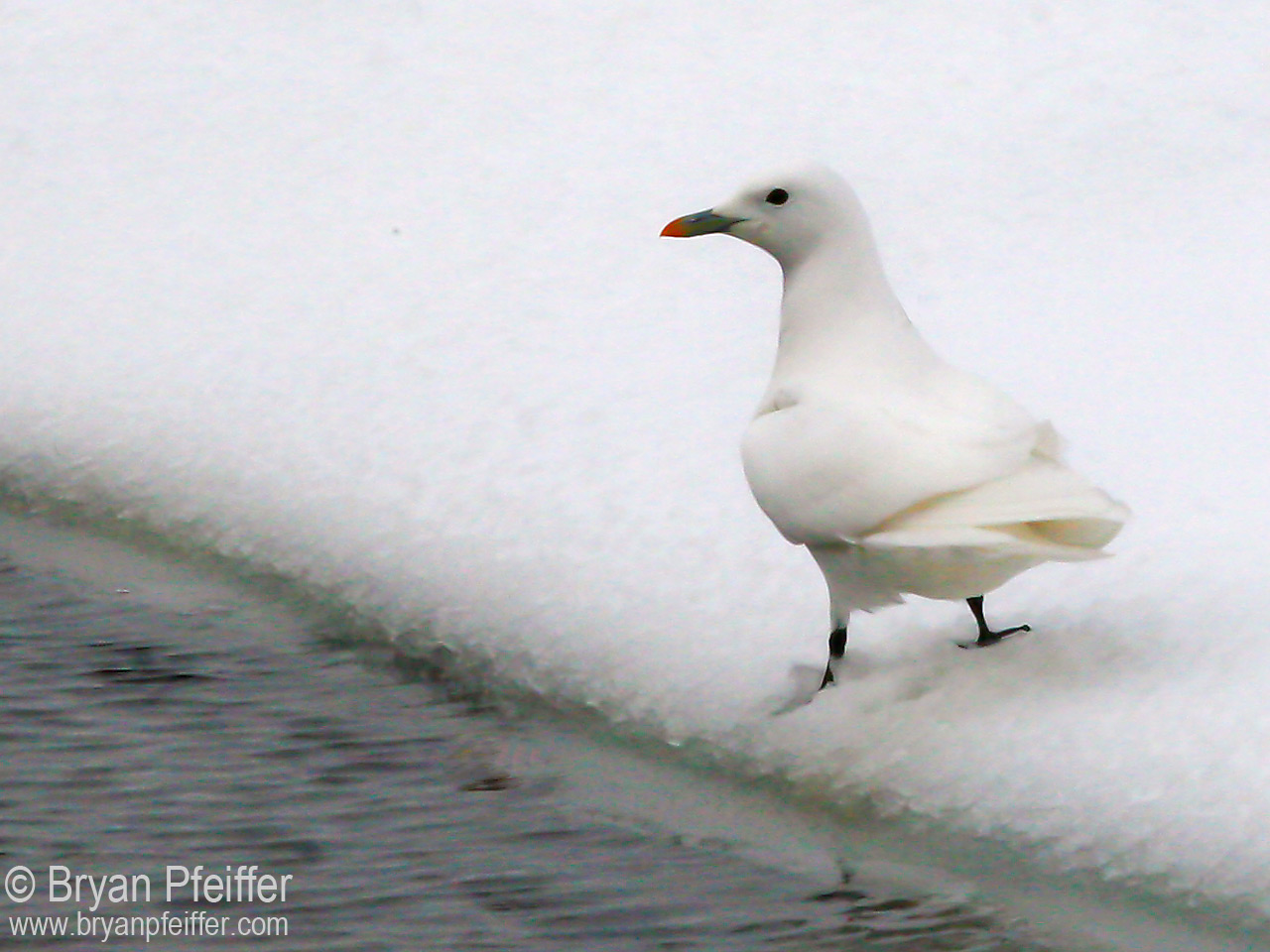Getting Gulls – Lesson One: Your Neighbors

Three images of the same Sabine’s Gull in flight off the Oregon Coast on July 21, 2012 / © Bryan Pfeiffer
This is the first in a series of posts on “Getting Gulls.” We begin with the three most common species here in the Northeast. I’ll cover immature plumages, additional species and rare gulls in future lessons. How many more lessons? As many as it takes.
HERRING GULL, ONE OF OUR MOST COSMOPOLITAN BIRDS, thrives in picnic areas or parking lots, at farms or fast-food joints, at sea or in sewage lagoons. Ivory Gull, the embodiment of ice, breeds as far north as any bird. And across the planet, not far from the Antarctic Peninsula, the Kelp Gull can gouge and eat blubber from the backs of surfacing southern right whales.
Gulls are nothing if not resourceful and entertaining (unless you’re a southern right whale). So, with our rainbow warblers long gone for the tropics, and with the vernal serenade still months away, you gotta get with gulls.
Yeah, gulls.

From top to bottom, adult Herring Gull, Ring-billed Gull and Great Black-backed Gull (not pictured to scale). / © Bryan Pfeiffer
Gliding in on frosty winds, stoic out on the ice, gulls beckon us in winter like sparkling snow on a sunny day. About 50 gull species inhabit the planet, a dozen or so of which we can routinely find over the course of a year here in the Northeast. (By the way, please do not call them “seagulls;” it’s an offensive term for gulls, even for those spending much of their lives at sea.)
Although many species have adapted to human habitats, their ability to exploit seas, freshwater coastal zones and inland sites make gulls an evolutionary success story. They are widespread and peripatetic, and therefore relatively secure on planet Earth.
Gulls are also sociable, nesting and foraging in groups. And they’re smart. Our rather common Herring Gull, for example, has been reported to drop pieces of bread in water as bait for catching fish. It’s one thing for a gull to drop a mussel on a rock to crack it open; it’s a bigger deal when a bird uses easy food as a tool to secure a better meal.
Gulls are fairly tame and therefore easy to observe. They also do some crazy shit. I’ve seen a gang of Herring Gulls knock migrating White-crowned Sparrow into the killing waters of Lake Erie and then swoop down to pluck the thrashing songbirds from the surf and gobble them like candy. I’ve seen a Herring Gull crush and eat an Arctic Tern chick in Norway (as I mentioned in a recent post about the crazy stuff birds eat). I once retrieved (and dispatched) a Bufflehead, mortally wounded by a hunter, before it could be eaten alive by a Great Black-backed Gull. And I’ve seen other gruesome events that I won’t print here. Hey, this stuff happens – you know, the struggle for existence.
Although they can be brutes, gulls are also elegant in flight and an intellectual challenge. Yet many birders avoid gulls or wish they would just fly away. One reason for the “Lariphobia” (gulls belong to the family Laridae) is that gulls present some of the greatest identification challenges in all of birding. Many species take three or four years to reach their definitive adult plumage, which is usually a tidy combination of white, gray, and black. During each of those youthful years, however, gulls show stages of brown mottling, which also varies seasonally from summer to winter. The result is that some gull species can show eight different plumages. To the novice, it’s like identifying snowflakes.
But fear not. Here is some basic advice for the bewildered gull-watcher. So get yourself to the parking lot of your favorite fast food joint, to your local garbage dump or to the shoreline. Then begin with these simple rules:
Age before beauty: If you’re new to this game, start by watching the adults, which show no brown or gray mottling other than streaks on the head and neck in winter. On adults you’ll mostly find gray or sometimes black uppersides, dark wing tips with white spots, clean white undersides, and clean white tails. Once you’ve got one of these clean adults, the color and markings on the bill will now help in identification. Leg color – often either yellow or pink – also helps. Relative overall size, head shape and subtle difference in bill proportions and shape can also help determine what gull you’ve got. We’ll save immature gull plumage for another lesson.
Learn what’s common: You will be less likely to discover the rare gull unless you first know the common species. So here’s what you must know about adult plumages of the Northeast’s three most common gulls. They’re your neighbors, pictured up there to the right; so get to know them.
- The Herring Gull has a clean white body and tail, a uniform gray upper-side, black wingtips with white spots, an orange dot on a yellow bill, and pink legs. It’s head and neck are mottled in winter.
- The Ring-billed Gull looks like a smaller version of the Herring Gull, except that it has (fittingly) a black ring around its small yellow bill and yellow legs. Its head and neck are slightly mottled in winter.
- The Great Black-backed Gull – the largest gull in the world – looks a bit like a Herring Gull, except that its upper-side is black (not gray like most other gulls). Its head stays fairly clean white in winter.
From here your gullwatching will expand through a winter of possibilities. Gulls offer some of the best evidence that nature is a lifelong learning experience. And if you happen to bump into a hungry Kelp Gull, keep your shirt on and watch your back.
Next Lesson: Immatures of common gull species, such as this second-winter Herring Gull. Note that it lacks the clean gray, black and white plumage of an adult, particularly on the tail. Below this gull, have a look at the adult Ring-billed Gull, cleanly marked except for its winter mottling on the head and neck. And finally, since you’ve made it this far with gulls, you’ll find an exceedingly rare Ivory Gull on Lake Champlain.




Fascinating article on Gulls – we thoroughly enjoy them no matter where we are(even dumps and land fills :>). Right now we are on Sanibel Island for a few days. So far we’ve seen Herring, Ring-billed, Laughing, and Great Black-backed -all in several stages of maturity. Today we also saw a Herring dropping something in the shallows of the Gulf. We couldn’t imagine the sand was that hard that it would break apart a shell but maybe it was. We never thought about the fact it could be using something as bait to find an additional morsel. Thanks for the enlightenment :>).
Thanks Bryan. Maybe now I can stop my eyes from glazing over and look- it’s a start!
Great series, Brian! I look forward to them all! Thank you for sharing your knowledge through this venue!
-thank you, thank you, thank you….what a good thing to learn on a cold winter day….
They’ll do that, won’t they? And Herring Gulls snack on Atlantic Puffin chicks.
I’ve watched Great Black-backed Gulls swallow Eider ducklings with one gulp.